Owning a pool in Perth is a luxury, but keeping it warm can quickly drive up energy bills. Many homeowners give up swimming early in the season because traditional heating options are too expensive.
The result? A pool that sits unused for half the year, while costly gas or electric heaters eat into your household budget and leave a larger carbon footprint.
The good news is that you don’t need to sacrifice comfort for cost.
In this guide, we’ll explore the best swimming pool solar heater options for affordable pool heating in Perth and explain how these systems work to keep your pool warm, eco-friendly, and budget-friendly.
What Is a Solar Pool Heater?
A solar pool heater is a system that warms your swimming pool by circulating water through solar collectors that absorb the sun’s free energy. Our team specialises in pool equipment installation to ensure your system is set up for long-term performance.
Unlike gas or electric systems, it uses renewable sunlight to raise water temperature, making it one of the most affordable and eco-friendly heating options for residential and commercial pools.
How Swimming Pool Solar Heaters Work
A solar pool heater works by using your pool’s pump to send water through solar collectors (usually mounted on the roof), where it gets warmed by the sun before flowing back into the pool.
This process repeats until the water reaches the desired temperature, giving you warm, comfortable swimming without relying on expensive gas or electric heating.
In Perth’s sunny climate, a solar system can increase pool water temperature by 5–8°C, and sometimes up to 10°C in ideal conditions.
Here’s a simple breakdown of how the system works:
First, your pool pump draws water from the skimmer or main drain and directs it toward the solar system. A temperature controller checks the difference between the roof collectors and the pool water. If the roof is warmer by at least 4–6°C, the controller diverts water to the collectors.
Next, the water flows through the solar collectors mounted on the roof. These can be unglazed rubber mats or glazed rigid panels. As the water passes through, sunlight heats it naturally. A check valve keeps the warm water moving in the right direction.
After that, the heated water returns to your pool through the regular return jets or a separate inlet. This steady cycle gradually raises the pool’s overall temperature. Once the target temperature is reached, the system automatically stops diverting water to prevent overheating.
Finally, built-in safety and control features ensure efficiency. On cloudy days, the system can bypass the roof to avoid heat loss. Freeze and overheat protection keep the collectors safe, and automation lets the system run on your pool’s normal pump schedule or with a booster pump if needed.
Tip for Perth homeowners: Using a solar pool blanket alongside your heater helps trap warmth overnight, reduce evaporation, and extend swimming comfort even further.
How a Pool Solar Heater Works: Explained Simply
A pool solar heater works by circulating water through roof-mounted solar panels where sunlight heats it, then returning the warmed water into the pool.
This natural process replaces costly gas or electricity, making solar one of the most affordable and sustainable pool heating methods.
Best Solar Pool Heating Options for Affordability
When comparing solar heating systems, affordability is often the deciding factor for pool owners. The choice usually comes down to unglazed, glazed, or hybrid systems. Each has different installation costs, efficiency levels, and payback periods.
The table below highlights the main differences to help you choose the best solar pool heater option for affordable pool heating.
| Solar Heater Type | Cost Range (AUD) | Efficiency | Payback Period |
|---|---|---|---|
| Unglazed Solar Heaters | $2,500 – $4,000 | Moderate (best in warm, sunny climates like Perth) | 2 – 4 years |
| Glazed Solar Heaters | $4,000 – $6,500 | High (performs well in variable weather, year-round use) | 4 – 7 years |
| Hybrid/Advanced Systems | $5,500 – $8,500+ | Very High (uses solar with gas/electric backup) | 5 – 8 years |
Key Insight for Perth homeowners:
- Unglazed systems are the most cost-effective due to Perth’s consistently sunny climate.
- Glazed systems suit those who want reliable heating in cooler weather or extended swimming beyond summer.
- Hybrid systems are ideal for families who want year-round warmth and are willing to invest in higher upfront costs.
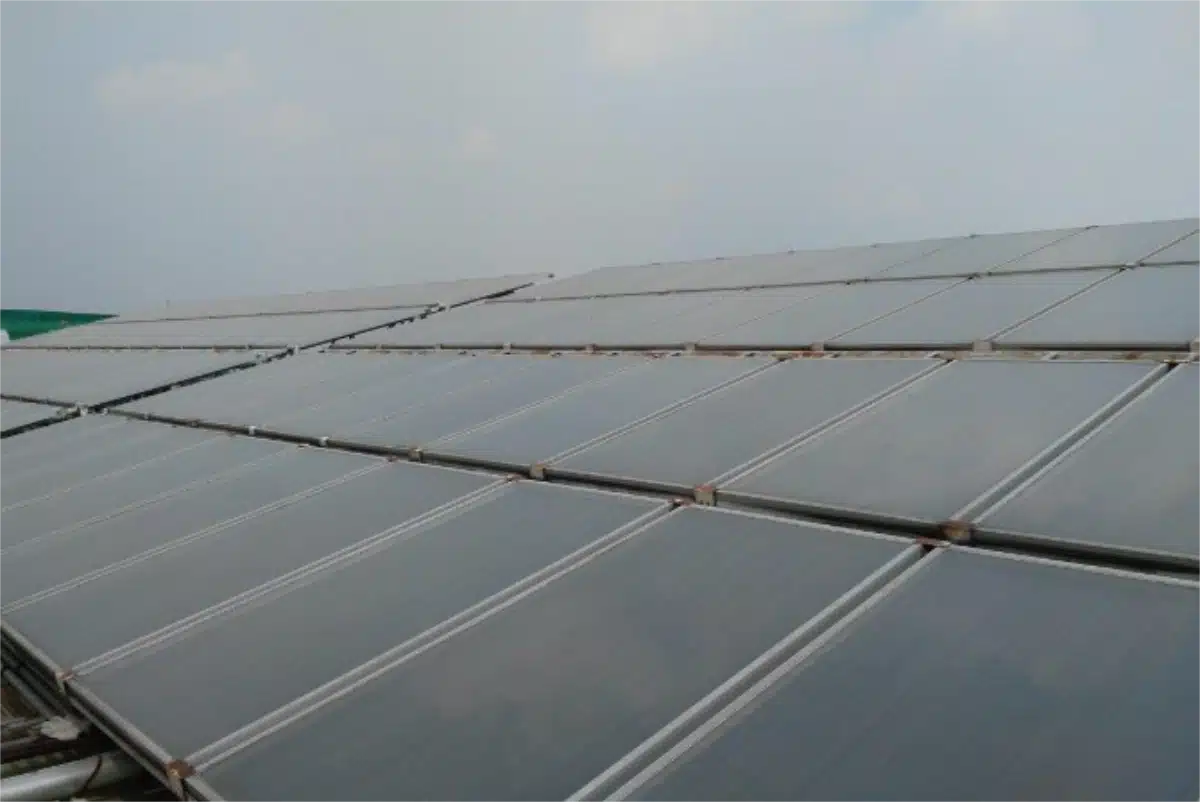
1. Unglazed Solar Heaters
Unglazed systems are typically black rubber or plastic mats. Because they lack insulation or glass, they are less efficient in cooler climates but perform very well in Perth’s sunny weather. They’re ideal when freezing conditions aren’t a concern.
- Best suited for: Warm climates like Perth, where freezing is rare.
- Advantages: Lower cost, easy installation, flexible materials, and quick payback period.
- Limitations: Less effective in cooler weather and not as long-lasting as glazed systems.
Pros
- Low upfront cost and simple installation
- Flexible material, quick ROI (2–4 years)
Cons
- Less effective in cooler seasons
- Shorter lifespan compared to glazed systems
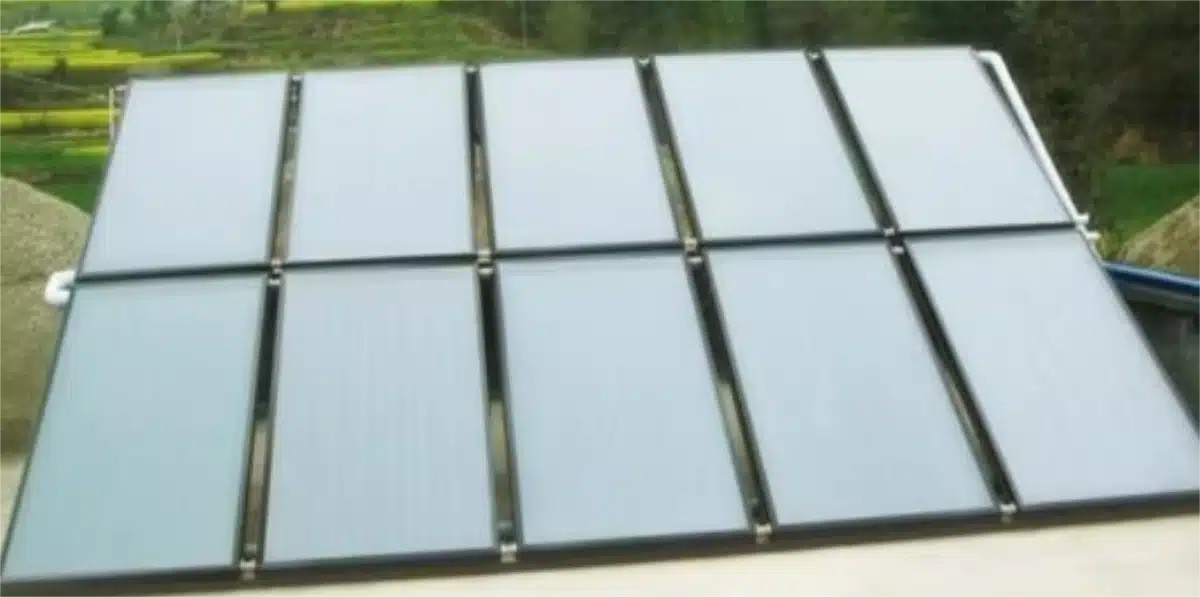
2. Glazed Solar Heaters
Glazed systems feature glass coverings and metal components, often copper or aluminium, making them more efficient at capturing and retaining heat.
Glazed collectors use toughened glass, copper tubing, and aluminium framing. This design allows them to retain heat better in cloudy or cool conditions. They are best for homeowners wanting to swim year-round and offer a longer lifespan compared to unglazed systems.
- Best suited for: Year-round swimming or areas with cooler evenings.
- Advantages: Higher efficiency, longer lifespan, and reliable heating in variable weather.
- Limitations: More expensive upfront, heavier installation, and may require stronger roof support.
Pros
- Strong heat retention, works in variable weather
- Durable construction and reliable year-round
Cons
- Higher upfront cost
- A heavier installation may require stronger roof support
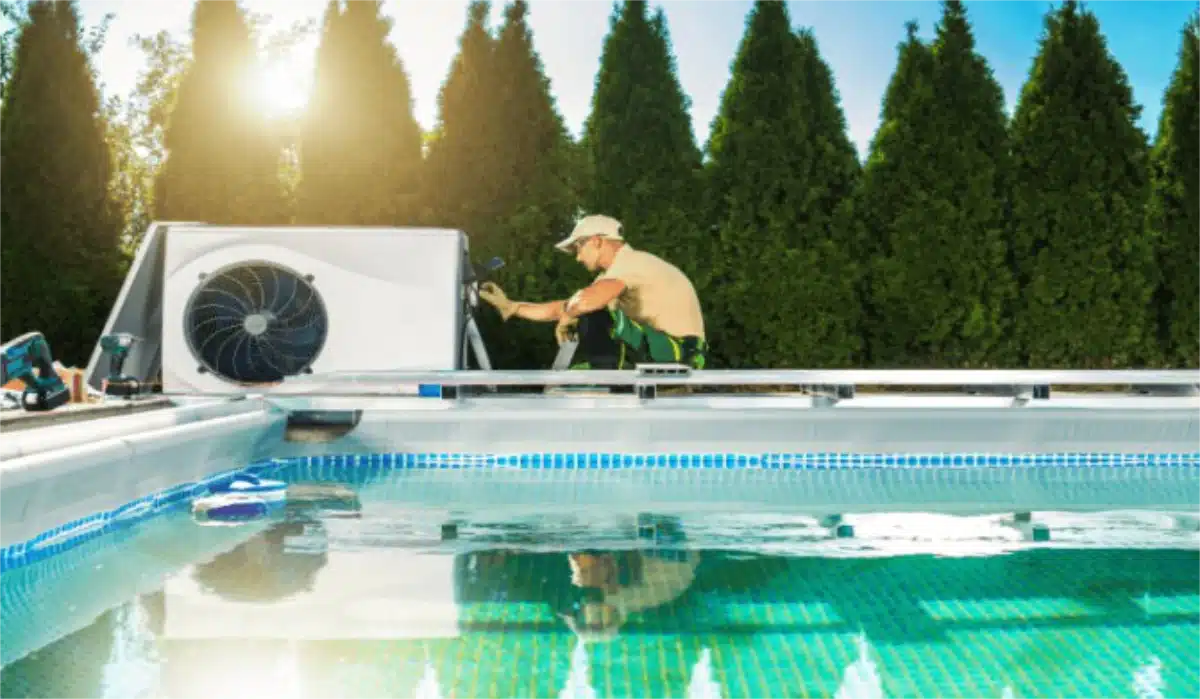
3. Hybrid or Advanced Systems
Hybrid solar pool heaters combine solar panels with auxiliary heating methods such as electric or gas boosters. They are designed to maintain consistent water temperature regardless of external conditions.
Some hybrid models, like the DualSun system, also cool solar panels while heating pool water, improving efficiency and system lifespan. This dual function makes them a very advanced, eco-friendly option.
- Best suited for: Homeowners seeking maximum efficiency and reliability throughout the year.
- Advantages: Consistent heating, advanced controls, and extended swimming season.
- Limitations: Higher cost and more complex installation compared to standard solar systems.
Pros
- Consistent water temperature regardless of weather
- Extended swimming season with advanced controls
Cons
- Most expensive option
- Complex installation and higher maintenance needs
How to Choose the Right Solar Pool Heater
Selecting the right solar pool heater involves balancing cost, efficiency, and installation conditions.
A well-sized and properly installed system ensures reliable heating while keeping costs affordable. Below are the key factors to consider when making your choice.
1. Pool Size and Collector Area Formula
- The collector area should equal 50% to 100% of the pool surface area.
- Example: A 40 m² pool requires 20–40 m² of collectors.
Sizing Notes:
In northern parts of Australia, collectors can be as little as 60% of pool size, while southern regions may require up to 80%. If the collectors are not black, increase the surface area by 20% for efficiency. Oversizing to 150% of the pool surface area provides faster and stronger heating.
2. Payback vs Budget
- Unglazed: 2–4 years.
- Glazed: 4–7 years.
- Hybrid: 5–8 years.
3. Roof Orientation and Climate in Perth
- North-facing roofs perform best.
- Tilt angle close to Perth’s latitude (32°) is ideal.
- Avoid shaded areas.
Key Takeaway: In Perth, sizing collectors to 50–100% of pool surface area ensures maximum efficiency and faster payback.
Benefits of Solar Pool Heating
Solar pool heating offers a range of long-term benefits that make it one of the most cost-effective and eco-friendly choices for Perth homeowners.
- Lower running costs: After installation, solar systems operate at minimal expense, using the pool’s existing pump or a small booster.
- Eco-friendly choice: Solar relies on renewable sunlight, cutting carbon emissions and reducing reliance on fossil fuels.
- Extended swimming season: Perth homeowners can comfortably swim for 7–9 months of the year, with year-round options when paired with glazed or hybrid systems.
- Low maintenance: With durable materials and simple designs, most systems require only seasonal checks and occasional cleaning.
Solar Pool Heaters vs Other Heating Options
Compared to gas or electric heat pumps, solar pool heaters last longer (10–20 years on average see our Ultimate Guide to Pool Heat Pumps for a full comparison), and work even better when paired with smart solar pool controllers for automated efficiency.”
While gas heaters provide faster heating, they are costly to run. Solar heaters, by contrast, are a sustainable long-term investment with huge cost savings and environmental benefits.
Maintenance and Efficiency Tips
Although solar pool heating systems are designed to be low-maintenance, following a few best practices will ensure maximum performance and longevity.
- Clean solar collectors: Remove dirt, leaves, or debris from panels to maintain efficiency.
- Check pump and valves: Ensure correct water flow and replace any worn components promptly.
- Use a pool cover: A solar blanket or cover helps retain heat overnight and prevents evaporation.
- Schedule annual servicing: Have a professional inspect the system once per year to check for leaks, valve performance, and pump efficiency. Our pool maintenance services keep your solar system and pool equipment running smoothly
- Troubleshooting: If water temperature is inconsistent, the issue may be a faulty sensor or controller, which requires inspection.
Tips to Maximize Solar Pool Heater Efficiency
Install collectors on dark roofs, which absorb more heat.
- Minimize shading on the panels for maximum sun exposure.
- Tilt collectors to latitude +10–15° for best efficiency.
- In hot Perth summers, you can even use the collectors at night to cool the pool by circulating water through them.
- Always use a solar blanket to prevent overnight heat loss.
FAQs
To Wrap Up
Solar pool heating is one of the most affordable and sustainable ways to enjoy a longer swimming season in Perth. By using the sun’s free energy, homeowners can reduce running costs, lower their environmental impact, and maximize pool comfort without relying on expensive electricity or gas.
Contact 1PoolCare to install a cost-effective solar pool heating system in Perth today and start enjoying warm, eco-friendly swimming for years to come.

With over 20 years of industry experience, Adrian Mole is the founder of 1 Pool Care, a leading mobile pool service in Perth. Known for his expert knowledge and reliable service, Adrian delivers professional pool cleaning, equipment repairs, and water balancing across the metro area. Backed by SPASA accreditation, he’s committed to quality, convenience, and customer satisfaction.

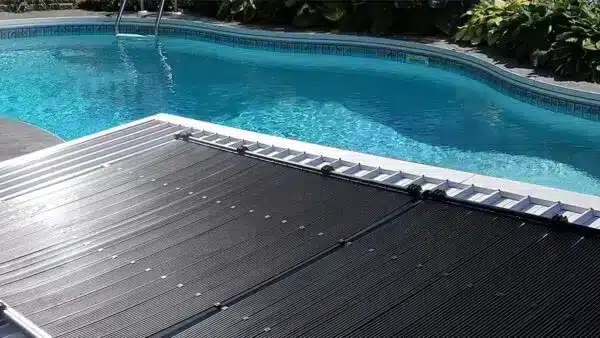



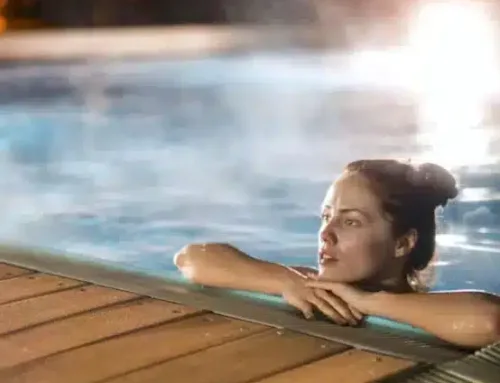





Social Media